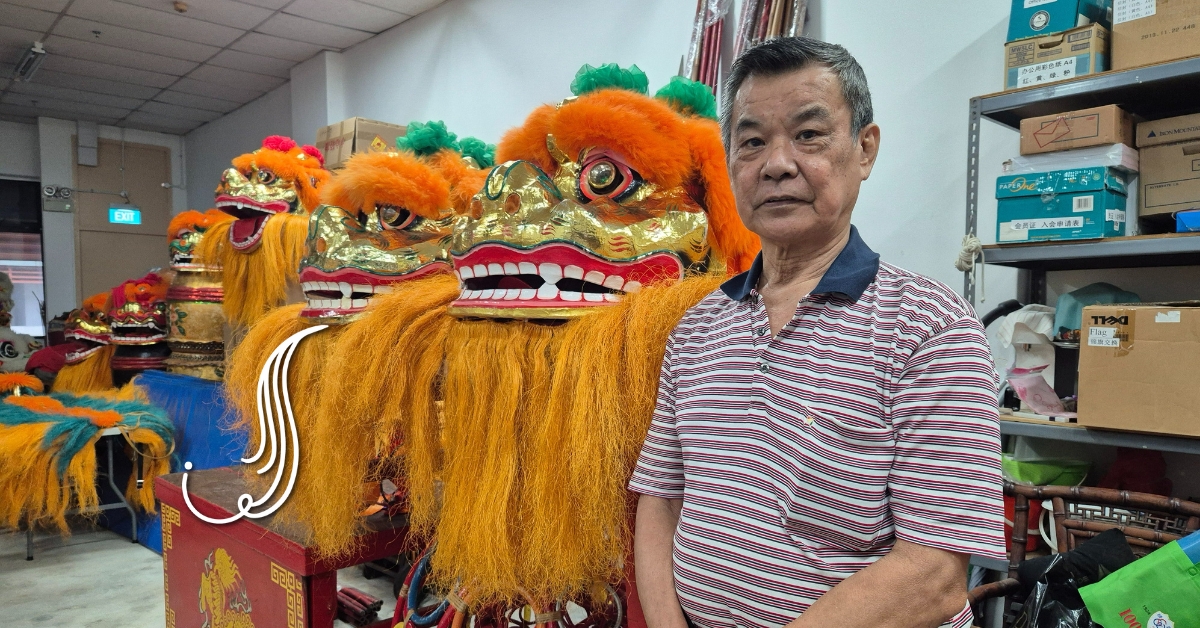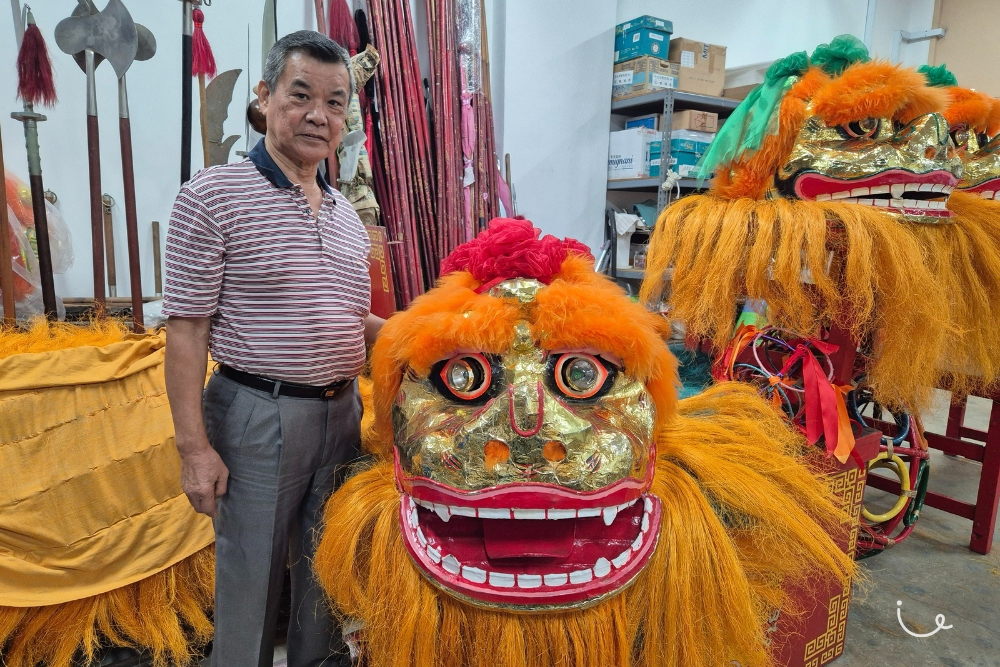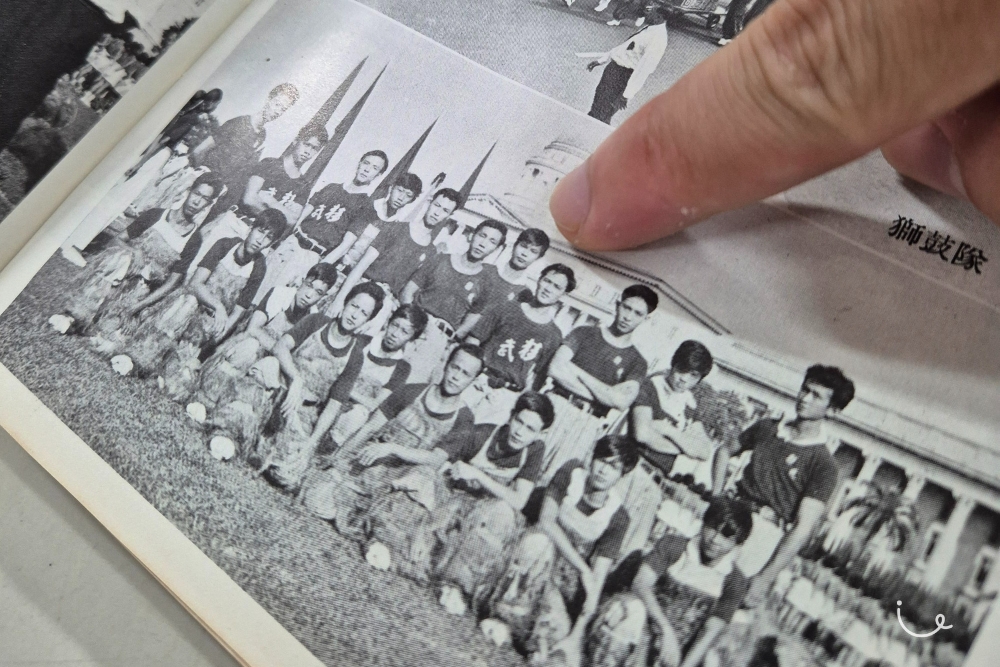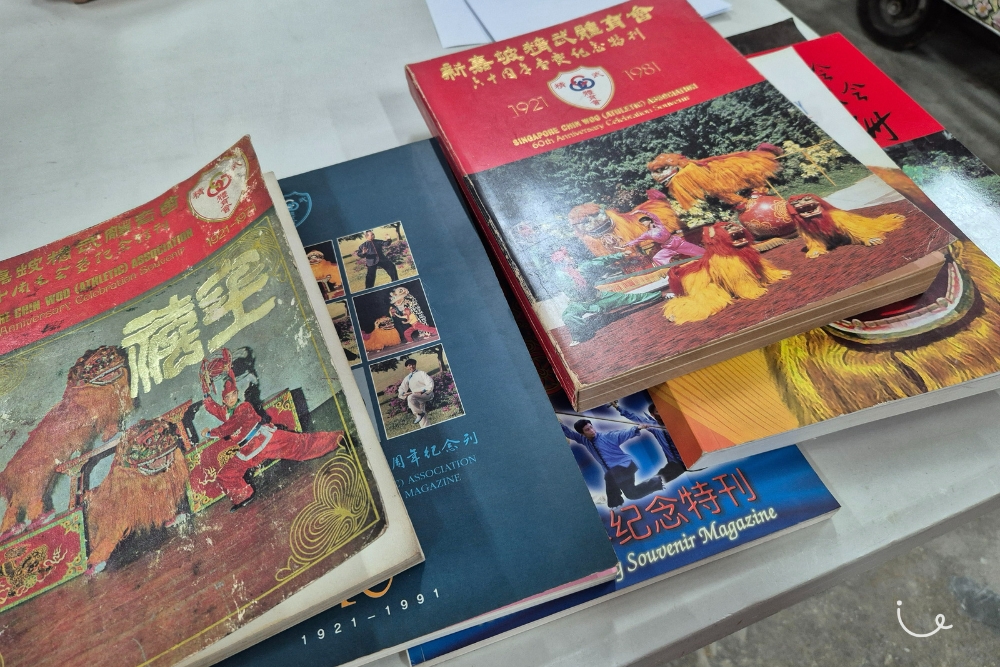
On the morning of 9 August 1966, Singapore held its first National Day Parade. The proceedings were underway by 9am with the arrival of then-President Yusof Bin Ishak to City Hall at the Padang.
First came the national anthem, a 21-gun salute and the presidential review of the parade. Then, echoing the parades that would follow in the succeeding years, some 23,000 men, women and children gathered into various contingents for a 90-minute ceremonial march-past.
Next, with the thundering clash of cymbals, drums and gongs, 60 lions and dragons took to the stage, performing an epic coda for the nation’s first birthday with the then-biggest-ever assembly of lion and dragon dancers in Singapore.
Among the troupes that fateful day was a team from the historic Singapore Chin Woo Athletic Association, and in that team was Lim Ee Beng, who was then just 21 years old.
The man is now 80, and decidedly stoic about performing in Singapore’s first National Day parade.
We were excited to perform, of course. But we were excited to perform no matter the occasion,
he says simply.
Advertisement
A lion dancer since his teens
Today, Ee Beng remains an active member of the association despite having hung up his lion head. He currently serves as the organisation’s chairman, working with other committee members to further the club and its activities.
You’ll usually find him at the warehouse serving as the club’s temporary headquarters (its usual shophouse home on Neil Road is being refurbished), all four walls stacked high with lion dance costumes, uniforms, wushu weapons and other club equipment.
Though it takes a keen eye to spot the evolving style of lion dance paraphernalia over the years, the room is in fact home to over 100 years of Chin Woo history, for the Singapore Chin Woo Athletic Association was founded here in 1921.
As the club’s longest-serving member, Ee Beng has played a huge part in the association’s development over the years – not the least for his dedication to the practice of lion dancing.
I got introduced to lion dance when I was around 16, when my friend gave me tickets to a performance by Chin Woo. I was instantly attracted to the grace and athleticism of the performers,
says the silver.
The association had found its newest member. The young Ee Beng began his training, starting first with a foundational three years of wushu.
If you don't have a good base of strength, balance, flexibility and agility, you cannot even think about progressing to lion dance,
he explains.
At age 19, after devoting “three hours an evening, five times a week” to the martial art and becoming proficient in the art of tumbling, balancing and somersaulting, he was ready to put on the costume.

In Singapore, there are two main styles of lion dancing. There is the more commonly found Southern style, where two performers put on a relatively furless costume before performing acrobatic feats like jumping from beam to beam or retrieving a bit of lettuce raised high above the crowd.
And then there is the Northern style, which features a hirsute red- or gold-furred lion balancing on a huge ball or seesaw. According to Ee Beng, this style is relatively rare here due to the athleticism it demands of its performers, with Chin Woo being one of the rare troupes to practice it.
You could always tell when it was our troupe because of the costume,
he says.
Performed at Singapore’s first National Day Parade (and many more after)

Though we nowadays associate the lion dance with auspicious events like Chinese New Year and the opening of new businesses, Ee Beng shares that lion dance performances used to be far more common in earlier Singapore, perhaps due to the proliferation of other troupes.
It even used to be a mainstay at Singapore’s annual birthday celebrations, all the way from the very first National Day Parade to their final performance in 1985.
They stopped having lion dances after that. I guess they wanted to have new programmes,
muses Ee Beng.
It was no skin off the avid lion dancer’s back as they had plenty of performances overseas.
Singapore was very proud of its lion dancers, so we would get to go to places like New Zealand, France, China, Japan and America to showcase our skills,
he says.
Although Ee Beng has retired from the sport, he attributes his years of martial practice to his fitness in his golden years.
I might be 80, but I definitely don’t look or move like it because of my years of training,
he says.
Lionhearted for lion dance’s future
The art form of lion dancing has existed for more than 1,500 years, surviving industrialisation, globalisation and now modernisation. Ee Beng figures that it won’t be going away anytime soon, despite new pastimes drawing attention away from the sport.
Last time, the TV wasn't so clear and there weren't so many programmes. You couldn't sit in front of it all day,
he says with a laugh.
"Young people nowadays have got more options than us when it comes to finding a hobby. There’s more competition. But there are still people who are coming to learn lion dance now."

Perhaps that is why the Singapore Chin Woo Athletic Association plans to build a soundproof indoor training ground at the new headquarters as part of its refurbishment.
I believe that there are still people like us passing down the practice of lion dance to the next generation. It’s not something that will ever disappear completely,
says Ee Beng.





